Stinkypotman
New Member
Although we are relatively newbies, we have had good success with a make shift cloning system. We at first tried the rock-wool method which does work but is high maintenance and we were only getting a 50% survival rate.
So, we bought a small storage container, placed 8 holes on the top to fit 8 small baskets which were cut off so only the rims remained to hold neoprene inserts. To mist the cuttings underneath, we pulled out the mister we use for the witch's cauldron on Halloween which works very well. Now we have about 90% success rate.
Also, I experimented with a product I found at Menards called Gel 2 Root. It comes in a package of two and costs about $3.60. I took a cutting from a seedling in veg so that I could put it in the flower room to determine the sex of the plant. Simple, just cut and insert into the gel, no cloning gel needed. The cutting survived well without being in a humidity dome. Also, you can move the cutting anywhere you want and forget about it. Ideal for those who do not want to build or pay for a cloning system. One drawback is that it takes longer to see root growth and when we removed the clone to transplant, some of the roots stayed in the gel.
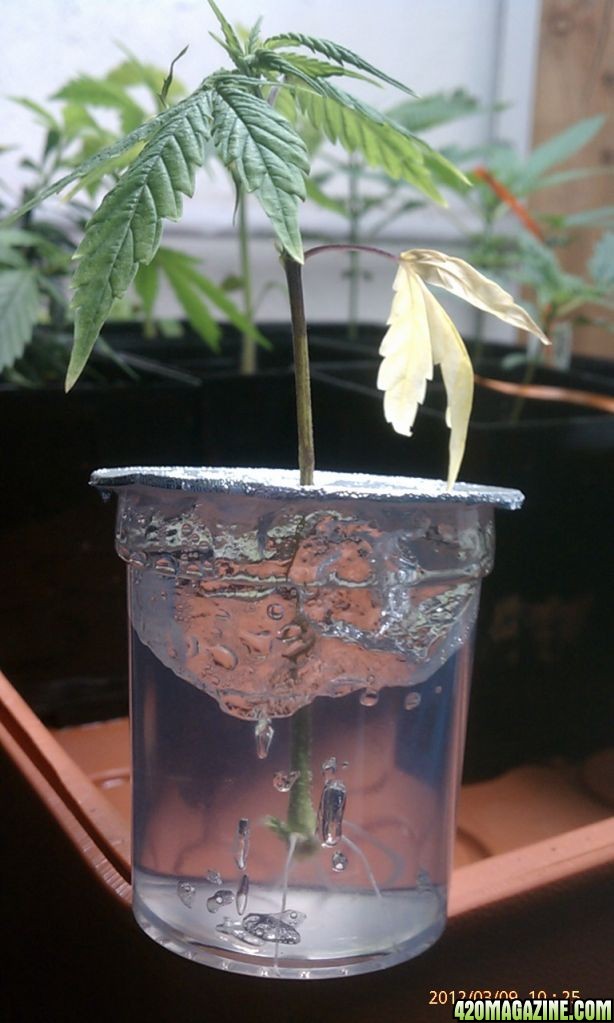
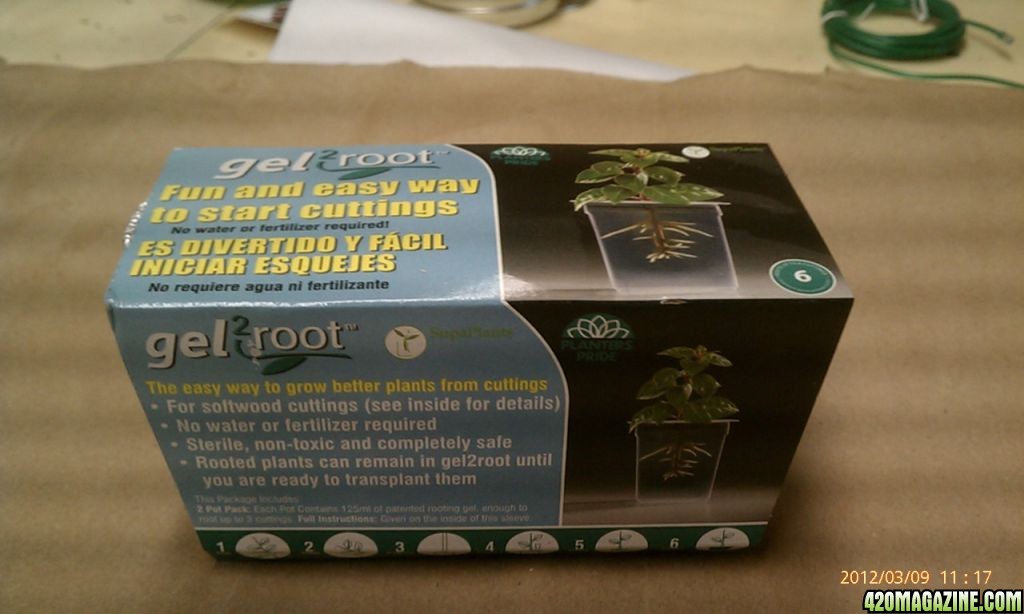
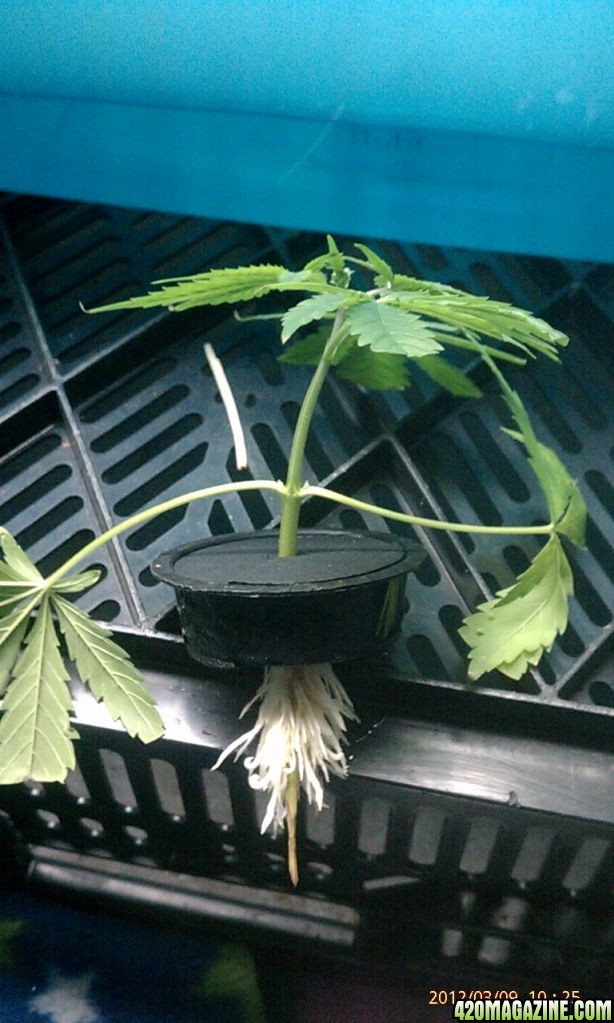
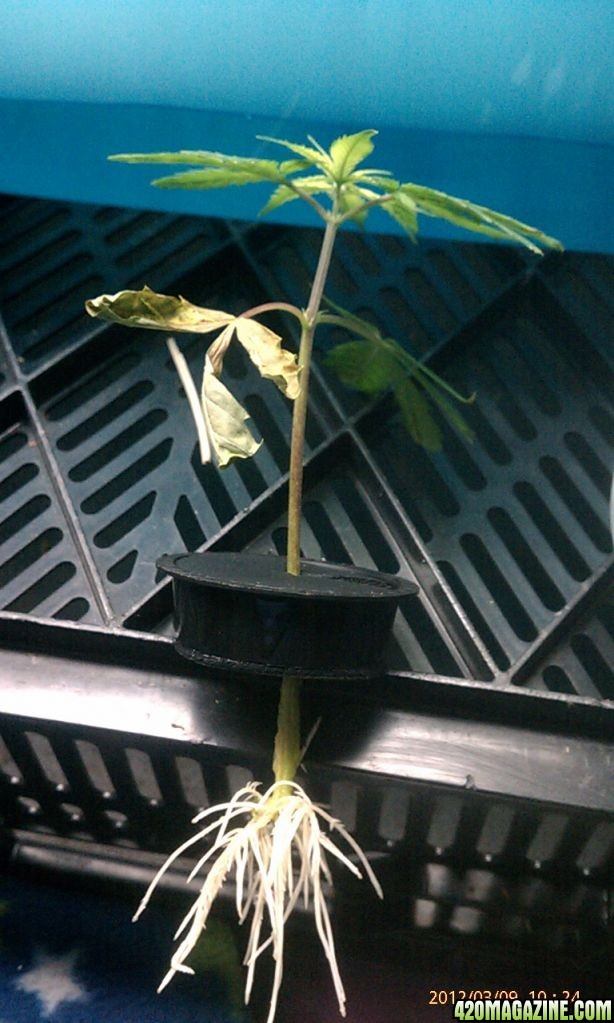
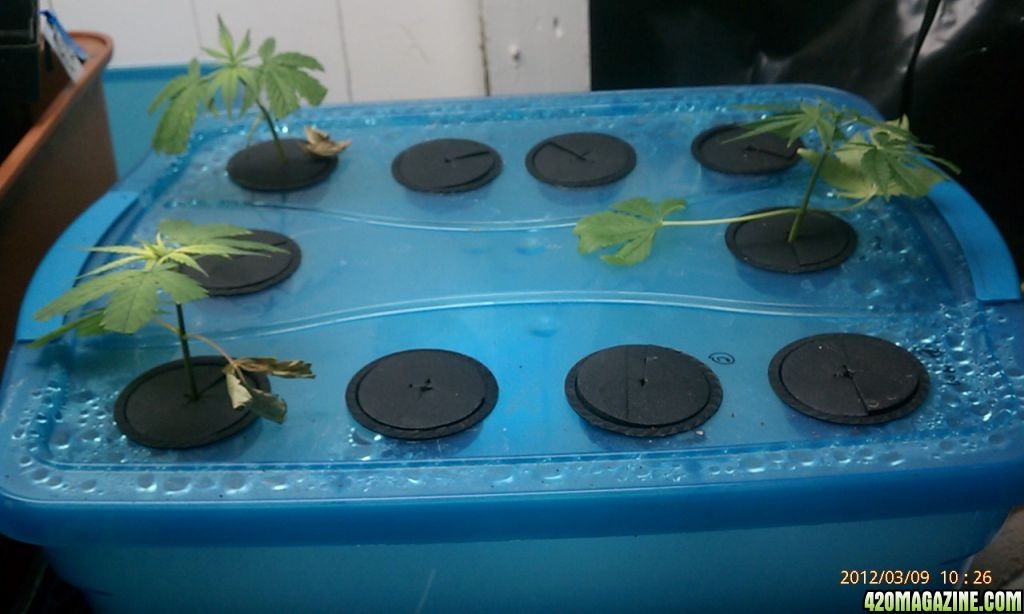
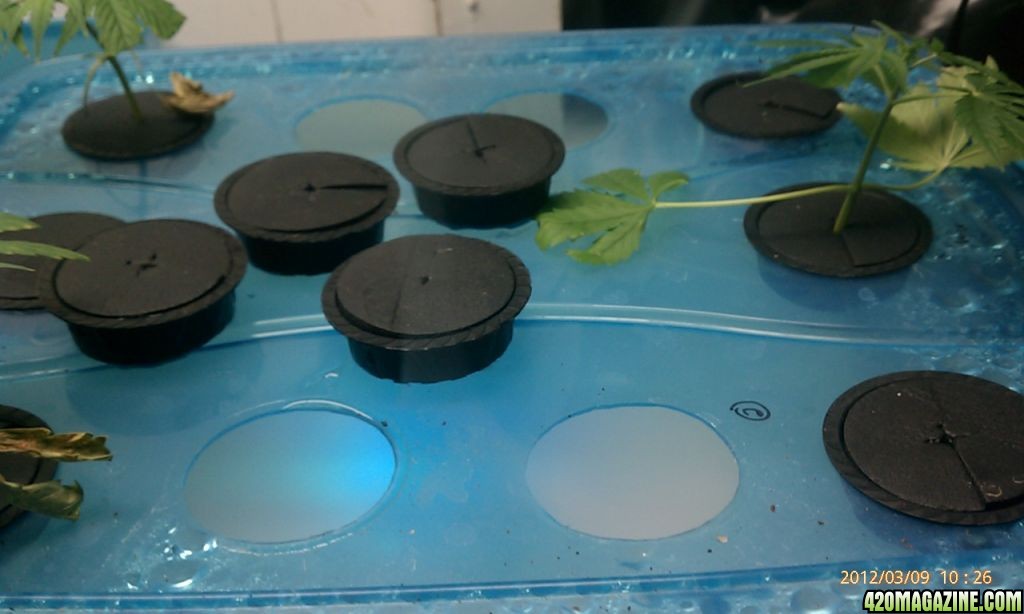
So, we bought a small storage container, placed 8 holes on the top to fit 8 small baskets which were cut off so only the rims remained to hold neoprene inserts. To mist the cuttings underneath, we pulled out the mister we use for the witch's cauldron on Halloween which works very well. Now we have about 90% success rate.
Also, I experimented with a product I found at Menards called Gel 2 Root. It comes in a package of two and costs about $3.60. I took a cutting from a seedling in veg so that I could put it in the flower room to determine the sex of the plant. Simple, just cut and insert into the gel, no cloning gel needed. The cutting survived well without being in a humidity dome. Also, you can move the cutting anywhere you want and forget about it. Ideal for those who do not want to build or pay for a cloning system. One drawback is that it takes longer to see root growth and when we removed the clone to transplant, some of the roots stayed in the gel.









